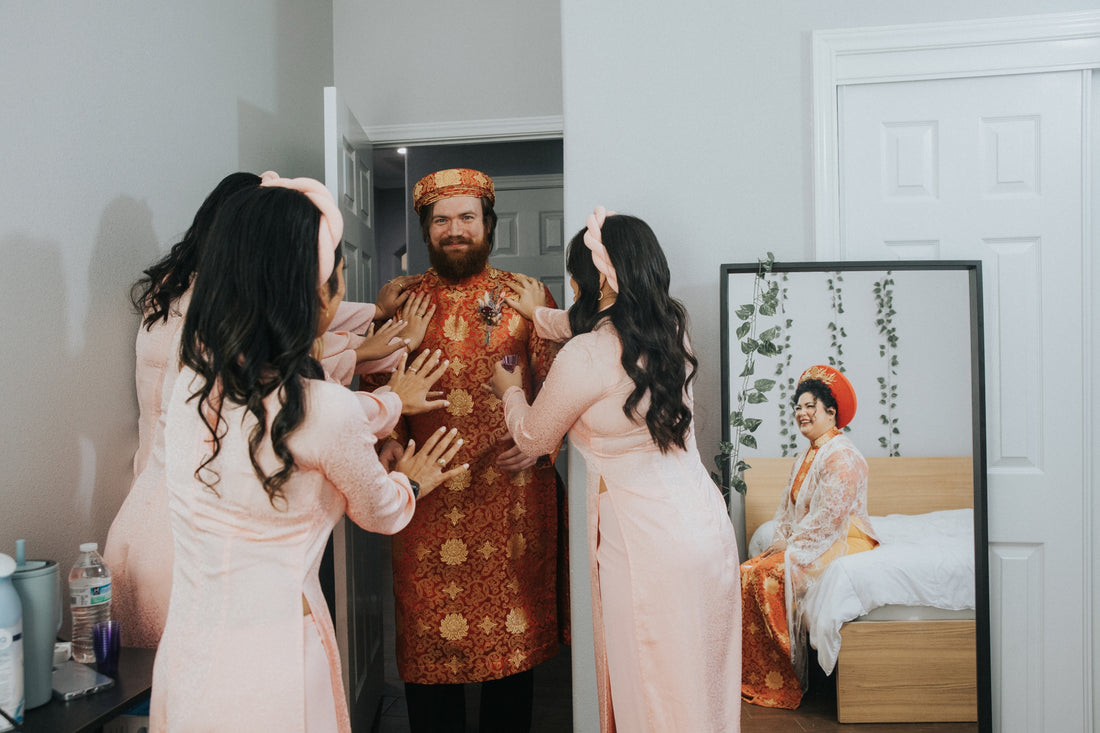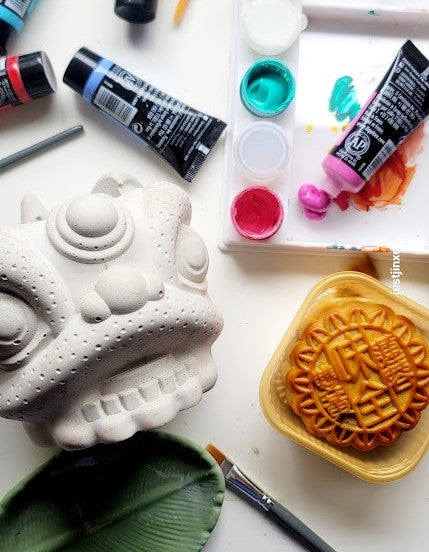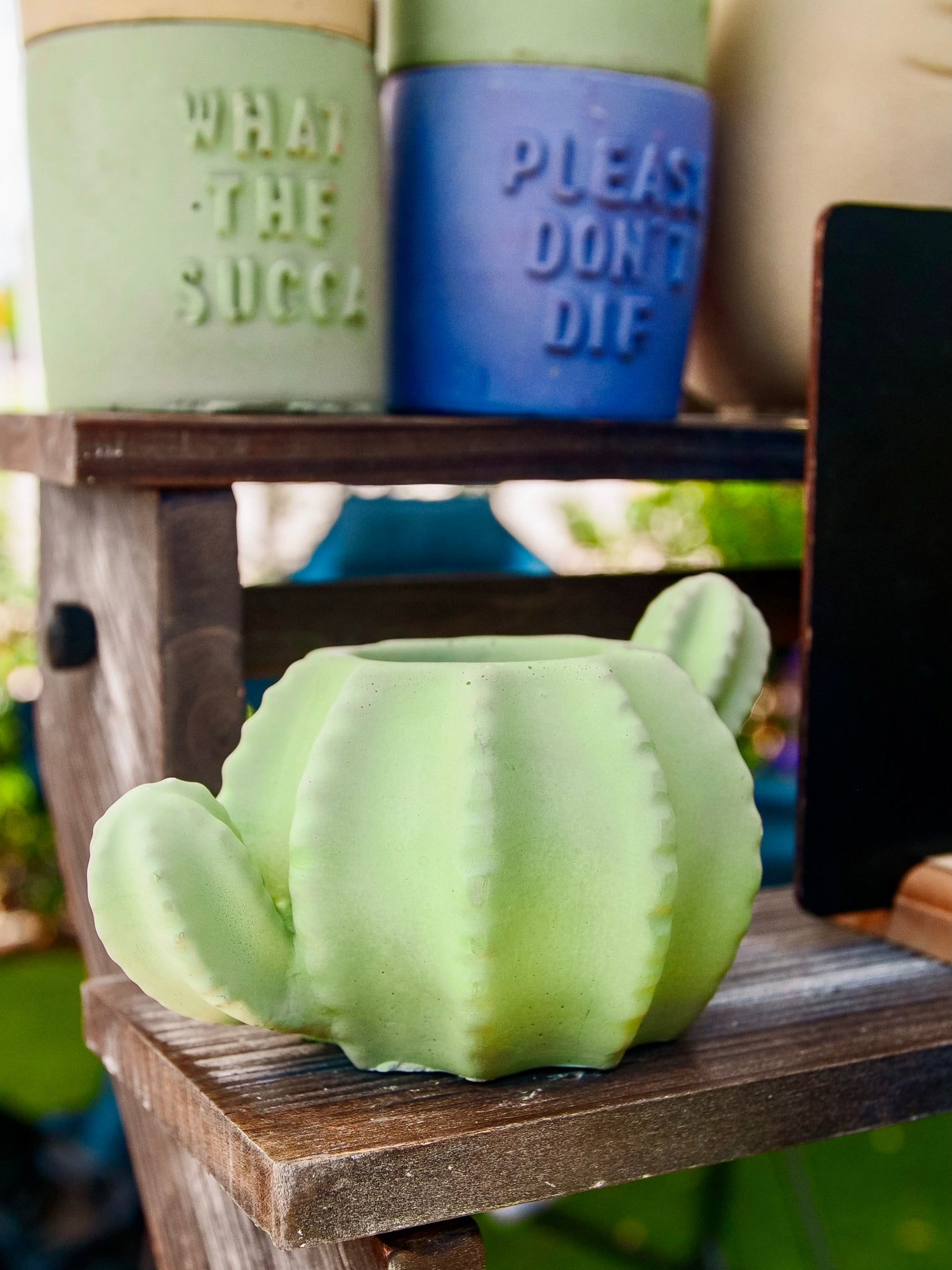
Understanding the Significance of the Bride Hiding During the Vietnamese "Đám Hỏi" Engagement Ceremony
Share
In Vietnamese culture, the traditional pre-wedding ceremony known as "Đám Hỏi," or the engagement ceremony, involves several customs and rituals that symbolize the union of two families and the couple's commitment to each other. One of these customs is the tea ceremony, where the bride may be required to hide in a room. Here's an explanation of this custom and its significance:
Symbolism and Significance
1. Symbol of Modesty and Respect
The practice of the bride hiding in the room during the tea ceremony symbolizes modesty and respect. It reflects traditional values where the bride is expected to be modest and demure, showcasing her respect for her future in-laws and the guests. This act of hiding emphasizes the bride's humility and readiness to embrace her new family with grace.

2. Building Anticipation
The act of hiding builds anticipation and excitement for the moment when the groom and his family formally ask for the bride’s hand in marriage. It adds a sense of formality and seriousness to the occasion, making the eventual unveiling of the bride a momentous and joyous event for both families.

3. Traditional Negotiations
Historically, while the bride is hiding, there may be formal negotiations and discussions between the two families regarding the marriage. This part of the ceremony highlights the importance of family consent and blessings in Vietnamese weddings. These discussions are crucial as they establish mutual understanding and agreement, ensuring a harmonious union.
4. Introduction of the Bride
After the initial formalities, the groom's family will request the presence of the bride. This is a significant moment as it symbolizes the acceptance of the bride into the groom’s family. The unveiling of the bride is often accompanied by well-wishes and blessings, marking the beginning of her new journey with her husband and his family.

The Tea Ceremony (Lễ Rước Dâu)
During the tea ceremony, the groom’s family arrives at the bride’s house bearing gifts, and the couple serves tea to their elders. This ceremony is a way to honor their ancestors and seek blessings for their future together. The bride hiding and then being introduced adds to the ceremonial importance of this tradition, underscoring the values of respect, unity, and family.
Conclusion
The custom of the bride hiding in the room during the tea ceremony in the Vietnamese "Đám Hỏi" reflects cultural values of modesty, respect, and the importance of family approval. It is an integral part of the engagement process, symbolizing the careful and respectful union of two families through marriage. By understanding and honoring these traditions, we celebrate the rich heritage and deep-rooted values that make Vietnamese weddings truly special.
Symbolism and Significance
1. Symbol of Modesty and Respect
The practice of the bride hiding in the room during the tea ceremony symbolizes modesty and respect. It reflects traditional values where the bride is expected to be modest and demure, showcasing her respect for her future in-laws and the guests. This act of hiding emphasizes the bride's humility and readiness to embrace her new family with grace.

2. Building Anticipation
The act of hiding builds anticipation and excitement for the moment when the groom and his family formally ask for the bride’s hand in marriage. It adds a sense of formality and seriousness to the occasion, making the eventual unveiling of the bride a momentous and joyous event for both families.

3. Traditional Negotiations
Historically, while the bride is hiding, there may be formal negotiations and discussions between the two families regarding the marriage. This part of the ceremony highlights the importance of family consent and blessings in Vietnamese weddings. These discussions are crucial as they establish mutual understanding and agreement, ensuring a harmonious union.
4. Introduction of the Bride
After the initial formalities, the groom's family will request the presence of the bride. This is a significant moment as it symbolizes the acceptance of the bride into the groom’s family. The unveiling of the bride is often accompanied by well-wishes and blessings, marking the beginning of her new journey with her husband and his family.

The Tea Ceremony (Lễ Rước Dâu)
During the tea ceremony, the groom’s family arrives at the bride’s house bearing gifts, and the couple serves tea to their elders. This ceremony is a way to honor their ancestors and seek blessings for their future together. The bride hiding and then being introduced adds to the ceremonial importance of this tradition, underscoring the values of respect, unity, and family.
Conclusion
The custom of the bride hiding in the room during the tea ceremony in the Vietnamese "Đám Hỏi" reflects cultural values of modesty, respect, and the importance of family approval. It is an integral part of the engagement process, symbolizing the careful and respectful union of two families through marriage. By understanding and honoring these traditions, we celebrate the rich heritage and deep-rooted values that make Vietnamese weddings truly special.



